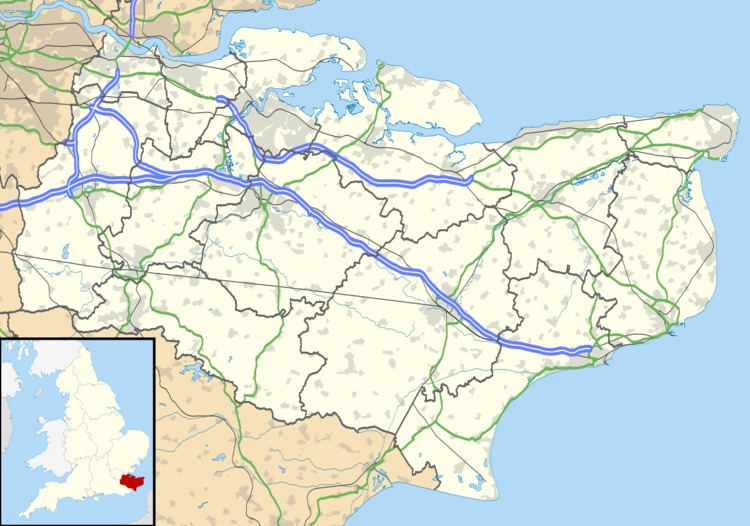Population 490 (2011) Local time Thursday 4:38 AM | Sovereign state United Kingdom District Swale | |
 | ||
Civil parish Graveney with Goodnestone Weather 12°C, Wind SW at 18 km/h, 88% Humidity | ||
Whitstable to faversham via seasalter and graveney kent england
Graveney is a relatively small but widely dispersed village located between Faversham and Whitstable in Kent, England. The main part of the village is located along the intersection of Seasalter Road, Sandbanks Road and Head Hill Road (at the railway crossing), which is surrounded by farmland. The rest of the village is dispersed amongst this farmland.
Contents
- Whitstable to faversham via seasalter and graveney kent england
- Map of Graveney Faversham UK
- Graveney Church
- Graveney boat
- References
Map of Graveney, Faversham, UK
Features include a local Pub ('The Four Horseshoes'), a primary school and a church. There is also a regular bus service that runs through the village.
The Saxon Shore Way (long distance path) passes around the Graveney Marshes (between Seasalter and Faversham). The marshes are part of the South Swale SSSI.
Graveney Church
All Saints Church, Graveney, was constructed in Norman language times, but it is mainly 14th century. The connections between the village of Graveney and the Christian Church can be traced back to a time before the Domesday Survey. The marshes are part of the South Swale SSSI.
Graveney boat
In 1970, when improvement works were being undertaken by Kent River Authority to drainage channels (Hammond Drain and White Drain) in Graveness, an Anglo-Saxon clinker-built boat was found in the mudflats. The boat was carefully removed by the National Maritime Museum to be conserved and stabilised by the Mary Rose Trust.
It was a cross-channel cargo vessel, reconstructed as some 13.6 m (45 ft) long and 3.4 m (11 ft) wide and 1 m (3 ft 3 in) in draught. Later studies, including dendrochronology determined that it was built from oak, in the mid-890s. It was abandoned in the mud in 950AD. It was also found that one of the last cargos it carried was hops (vines used in making beer). Other remains include fragments of quern-stones (grinding stones) made from Mayen lava, located in the Rhineland, Germany.
